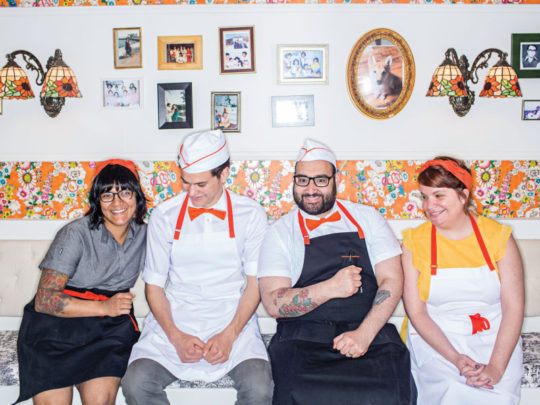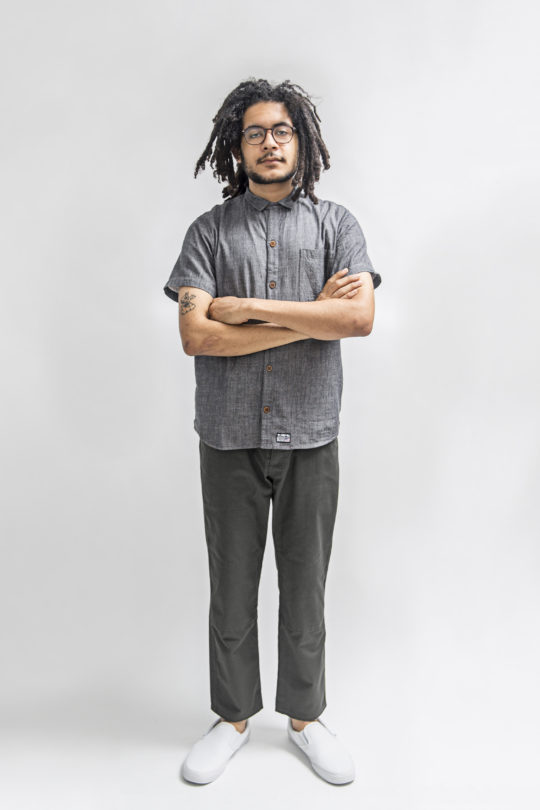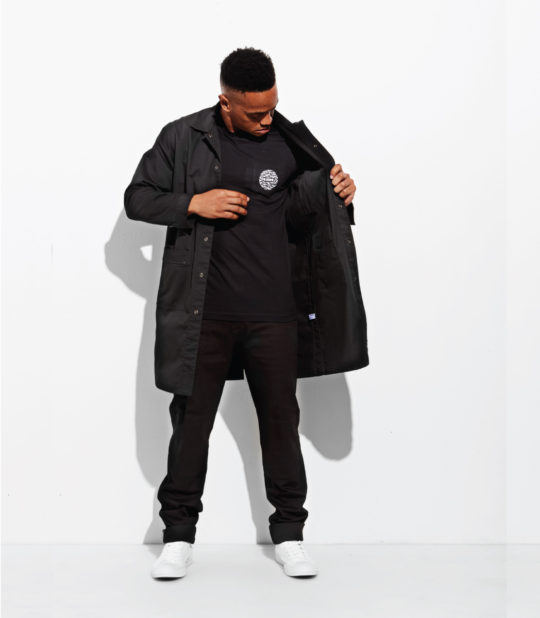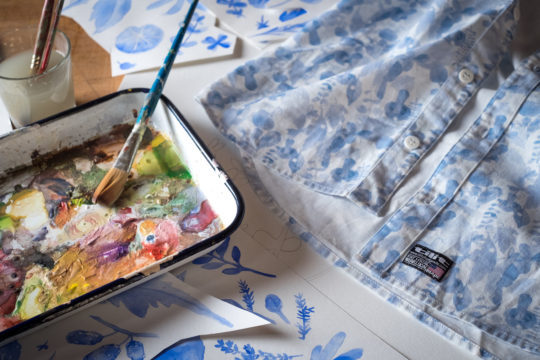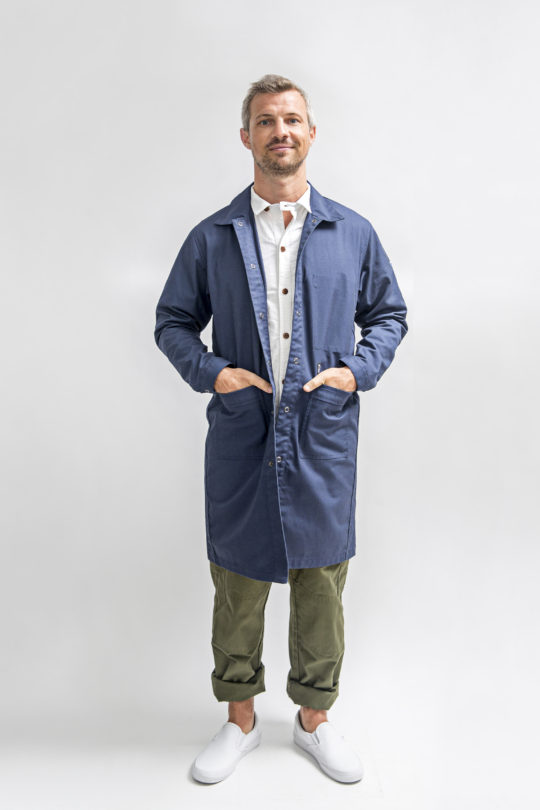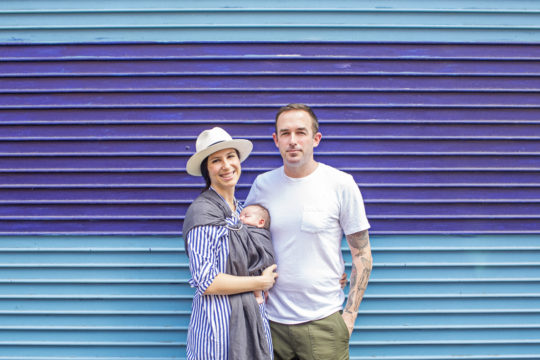Photography courtesy of Tilit and Huge Galdones, Greg Vore, Heidi Geldhauser and Dan Dry.
Alex McCrery, a former chef turned designer, started Tilit with wife Jenny Goodman in 2012. Their goal is to provide durable, functional and stylish American-made apparel for the hardworking people of the restaurant industry.
Can you tell us a little about where you grew up and how you got interested in food?
I grew up in Covington, Louisiana an hour outside New Orleans, my mom and grandmother were great cooks, I was a terrible eater and so in my early teens I started making stuff that I wanted to eat. My mom was basically like.. “if you’re not eating my food make something for yourself or go hungry.” And in New Orleans, Louisiana everyone is interested in food. It’s just part of the culture. After graduating highschool, I cooked a little bit and after college, I went into cooking full time.
What did you study?
Advertising, my degree has actually come in handy since we started the business. I went from Kansas where I went to school, to St. John in the Caribbean. There was an eco resort that is not there anymore, but I basically worked to live. I chose a job in the kitchen and that’s probably where I found out that I loved to cook. They basically had a stockpile of frozen shit. Everybody thinks the island has all this abundant fresh food but truth be told, it’s usually frozen stuff. We got to cook whatever we wanted and people really loved my food and I think that was the catalyst for actually taking it seriously.
When I moved back from there to New Orleans, I gave myself six months to get a job in a real kitchen. I worked first for a Vietnamese chef, who was a James Beard Award Winner Minh Bui in New Orleans. I actually went to Commander’s (Palace) first, applied and they told me I was crazy and had no food knowledge. I could see them laughing at me inside the kitchen. Which I thought was really rude and heartbreaking (laughs) at the time. So I came back and applied six months later got the job and stayed there for three and a half years before moving to New York.
Where was your first position in New York?
When I came to New York I worked at Aureole. I went there to do a stage for the summer. At the end of the summer, Hurricane Katrina happened so there were no jobs to go back to. No house. So I stayed in New York and took a job as the chef at Antonucci, which was an Italian Restaurant opening on the Upper East Side. I ran that for 2 years, From there I opened a restaurant in Brooklyn called GOODS. As an owner and chef and quickly closed it 6 months later. As a former owner, that was a great learning experience, also heartbreaking but you have those ups and downs that keep you going. During the same time I was also a private chef and continued that for 4 years while I started Tilit.
How did you get the idea to start the company?
It was a combination of being in the industry forever and wearing and hating the clothes. Then when I went to private, I was the only one wearing the clothes. And I was walking out on the street, going to the grocery store wearing the clothes and feeling absolutely ridiculous. So it just felt like something had to be done. So I went and searched for someone making something cool for chefs, nothing was there. It was the same time that companies like Carhartt were going nuts with their ‘Work In Progress’ line. And workwear in general became more popular streetwear, but no one would dare do it for chef wear. So we had the crazy idea to do it.
Did you start with aprons?
We actually started Tilit with the idea that we were going to be a clothing line. We started with a shirt a pair of pants, and two wax aprons. We’ve kept the basics of those items. The pants have changed the most, because they take the most abuse. And we really deviated from standard design for kitchen pants, which were baggy, made from a really cheap material and made to be thrown away after three months. It’s just a bad garbage garment. As soon as we got a lot of feedback from everyone as they wore it we tweaked the designs from there.
Still I imagine it’s quite a process from having an idea for style in your head and getting a pattern made and the item produced? Can you talk about the design process and how you were able to bring those steps together?
We were lucky in that I have a friend from school with who was working for Kate Spade and she connected me with one of her friends who was super instrumental in giving us advice and people to be in touch with. Through her I met our pattern maker. I took sketches that I had drawn with details and measurements ~ very rudimentary.
We still work with him a lot and he’s great at interpreting Japanese menswear specifically workwear. He just got it from the beginning and did everything old school. He takes our drawings and creates paper patterns, nothing digital about it at all. He was super intuitive on picking up what we were going for and he introduced us to our manufacturer.
And everything is made here in New York?
Yes, 100%. The patterns are made in Queens and apparel is manufactured in Midtown Manhattan.
How do you go about sourcing materials?
We generally find things we like, test it, wash it, I wear it. We try to get as much as possible from the United States, although there are not a ton of mills left so there’s not that much to choose from. So we go to Italy for stuff like chambrays. Denim and a lot of materials for aprons come from Japan. And we’re getting into custom stuff now, which is a challenge but I think it will be good for us in the long run. The fabric on the pants was tough to get right so we are now custom milling our own.
How much of a role do you think open kitchens have played in your success?
Definitely the increase in open kitchens helped a lot, as well as chefs being owners or partners or invested in some way, other than just employees. When I started out everyone worked for the owner who was someone else. So now the idea that more chefs are owning everything about the restaurant, not just the food, and they are making rounds to the tables and being more out in the open.
At the same time we started the company, the industry started taking ingredients more seriously. You know, wanting it to be local and understanding where things come from, so it seemed like a natural transition as a chef that you’d want to do that with everything in your repertoire, your clothes being part of it. People like to know the story of where things come from, whether it’s your food or the shirt on your back.
Was there one experience that you think was essential to your success?
We were lucky in that we started very small. In hindsight it was fortunate that we failed so miserably with the restaurant, because I was was super risk-averse with all the stress of losing all your money and your dream. I started working on the idea three or four months after closing the restaurant. We didn’t start the business until almost a year later. But I think the idea of starting low risk is what helped us.
We went real small on inventory and kept the line small. We didn’t jump into chef coats because we had no idea what to do at the time. And then we got lots of feedback, and I think by listening to our customer rather than thinking this is what our customers should wear, that really made a big difference. We still do that, we test in a very small way with limited runs to get feedback and then once we know that people love it and it holds up and stands the test of time, then we go bigger.
We heard you’re working on a cool collaboration with David and Anna Posey on their highly anticipated new restaurant Elske in Chicago. Can you tell us a little about that?
David has been wearing our stuff for a while. I met David at Blackbird a while ago ~ he had been wearing the chef shirts and I saw some of Anna’s drawings on Instagram and we had the idea to do our own print, for a shirt or an apron – not for pants, we’re not printed pants people. It was one of those things that all lined up and it was perfect. We started going at it from there. And at the same time they were working on Elske and it was the perfect timing because they were just about to figure out their uniforms. It was definitely challenging on our end to get the colors and fabric right to make the prints look super clean and the color we wanted.
Is it for the front of our and back of the house?
This is just for David and Anna, and then we’ll do a limited edition run for retail. And we have aprons for them as well. The front of house will have white shirts from us.
Any new products we can look forward to?
We have trench coats that are new. It’s kind of butcher inspired. During our last Japan trip we thought that lab coat/ trench coats were super in. We just embroidered some today for a new client Cloud Catering. They are our first group to wear it, which is cool. We have a dress for retail as well. On the custom side, we have four dresses in our line for hotels. Also 3/4 sleeve and long sleeve blazers. Tons of stuff that’s custom.
You’ve recently become parents – How has that changed dining out for you?
It’s a lot earlier so you don’t have to wait for a table as much. I also feel the kitchen is fresh at when you come in at 5:30. They are happy to cook for you at that time.
Any recommendations in New York or elsewhere that you want to give a mention to?
Lately we stick close to our neighborhood so the Contra and Wildair guys are super nice guys and great food. Musket Room has great food and my friend Gerardo (Gonzalez) is about to open up Lalo which we’re really excited for.
To learn more about Tilit visit them at tilitnyc.com


